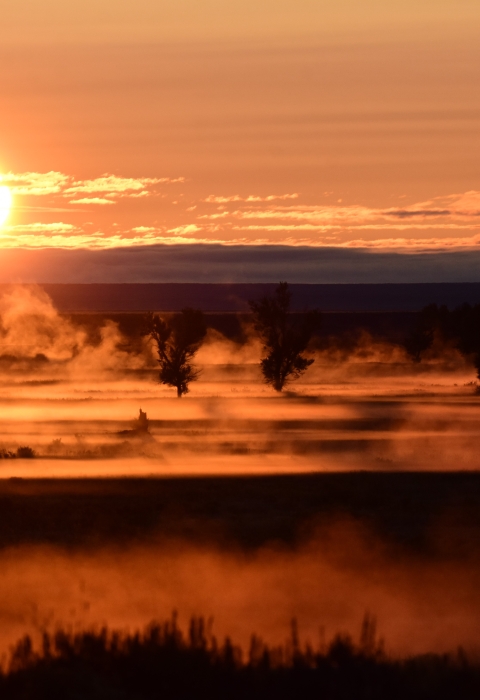

Today, the U.S. Fish and Wildlife Service is announcing final updated planning policies for the National Wildlife Refuge System – a national network of lands and waters for the conservation, management and restoration of the fish, wildlife and plant resources and their habitats across the United States for the benefit of present and future generations of Americans.
“Updating these planning policies supports the Service’s innovative and collaborative approach to refuge management and aligns with administration priorities,” said Service Director Martha Williams. “These updates will ensure that America’s national wildlife refuges are a thriving and sustained network of healthy lands and waters for imperiled species and diverse wildlife populations, for the benefit of present and future generations.”
The four planning policies that are being updated are: Refuge Planning Overview (602 FW 1), Land Protection Planning (602 FW 2), Comprehensive Conservation Planning (602 FW3) and Step-down Planning (602 FW 4). These policies set the vision for refuge planning to both address refuge-specific issues and to support the landscape-level goals and objectives identified with the Service’s partners.
The policy updates will modernize the management of the Refuge System and enhance visitor engagement by incorporating landscape conservation planning and design and requiring consideration of climate change climate change
Climate change includes both global warming driven by human-induced emissions of greenhouse gases and the resulting large-scale shifts in weather patterns. Though there have been previous periods of climatic change, since the mid-20th century humans have had an unprecedented impact on Earth's climate system and caused change on a global scale.
Learn more about climate change , habitat loss and degradation, invasive species invasive species
An invasive species is any plant or animal that has spread or been introduced into a new area where they are, or could, cause harm to the environment, economy, or human, animal, or plant health. Their unwelcome presence can destroy ecosystems and cost millions of dollars.
Learn more about invasive species and other environmental effects in management decisions. The policy updates emphasize Service coordination with states, Tribes, Alaska Native Corporations, Alaska Native Organizations and the Native Hawaiian Community and other partners when planning on national wildlife refuges.
These updates are a central component of the Biden-Harris administration’s approach to conservation under the America the Beautiful initiative, which focuses on pursuing locally led, collaborative and inclusive efforts to conserve, connect and restore our nation’s lands and waters.
The authority for these policies is derived from the National Wildlife Refuge System Improvement Act of 1997 . National wildlife refuge planning sets the broad vision for refuge management and determines goals, objectives, strategies and actions to ensure refuges are managed consistently with a refuge’s purposes and the mission and goals of the Refuge System and all other applicable laws and regulations.
These final versions of the policies incorporate input received during a 30-day public comment period announced in the Federal Register that ended on October 16, 2023. The Federal Register notice and supportive documents related to these final policies will be available on April 18, 2024, at www.regulations.gov : Docket Number: FWS-HQ-NWRS-2023-0024 .
The Refuge System is an unparalleled network of 571 national wildlife refuges and 38 wetland management districts. There is a national wildlife refuge national wildlife refuge
A national wildlife refuge is typically a contiguous area of land and water managed by the U.S. Fish and Wildlife Service for the conservation and, where appropriate, restoration of fish, wildlife and plant resources and their habitats for the benefit of present and future generations of Americans.
Learn more about national wildlife refuge within an hour’s drive of most major metropolitan areas. More than 67 million Americans visit refuges every year. National wildlife refuges provide vital habitat for thousands of species and access to world-class recreation, from fishing, hunting and boating to nature watching, photography and environmental education. This recreation on national wildlife refuges supports regional economies to the tune of $3.2 billion dollars per year and support more than 41,000 jobs.